Genetics for Breeders
The instruction manual for every living thing
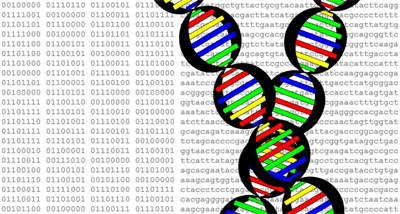
DNA is a very complex molecule which is made up of four nitrogenous bases: adenine, cytosine, guanine, and thymine. These four bases code for genes. The individual cells are able to read these bases. Just like a computer is able to read the 0s and 1s in its program, the cells in the body of every living organism, including you and your dog, are able to read the A’s, T’s, G’s, and C’s in its genome. And thus, this molecule is able to code for any living thing from bacteria to a plant to your dog.
When things go wrong
Sometimes there are mutations in the genome. A mutation is any change in the DNA sequence. These mutations can be good, and in fact, the accumulation of lots and lots of mutations over billions of years is the reason we are not single-celled organisms living in hydrothermal vents at the bottom of the ocean. However, most mutations are bad and a change in even one base could cause disease. That’s why we sequence the genome – to look for bad mutations that cause disease.
Two sets of chromosomes
Chromosomes are strands of DNA that are wound up really tight and can be seen on a very fancy microscope. Each person and dog has a set of chromosomes from their mom and one from their dad. The interaction between genes on each set of chromosomes is an interesting thing that geneticists like to study. This is where the concept of dominance and recessivity comes in. Simple, mendelian traits are governed by only one gene. That gene, because there is one version of that gene on the chromosome from dad and one version of that gene on the chromosome from mom are governed by two alleles. Allele is the name geneticists give to each version of the gene on each of the different chromosomes. Looking at these alleles allow us to be able to calculate probabilities regarding potential genotypes. For mendelian traits, this is best illustrated with a Punnett square. Generally when analyzing pedigrees we assign one of four modes of inheritance to a given trait:
- Autosomal recessive
- Autosomal dominant
- Sex-linked
- Mitochondrial
- Complex
About Autosomal Inheritance
Autosomal just means not sex-linked. Every dog has two sex chromosomes, females have two X chromosomes and males have an X chromosome and a Y chromosome. Any gene that is not on one of those two chromosomes is considered autosomal.
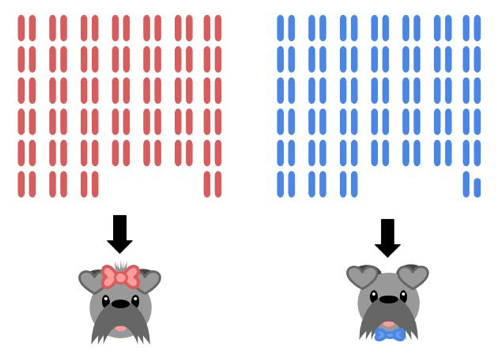
Dog Chromosomes
Dogs each have 38 pairs of autosomal (non-sex) chromosomes, one from each parent.
Females have two X chromosomes and males have one X and one Y chromosome.
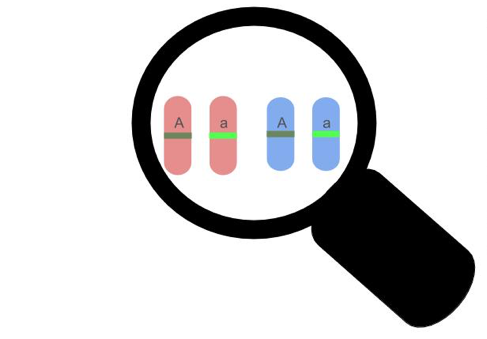
Genes Live on Chromosomes
In this example, let’s say that the gene highlighted in green is a homozygous recessive disease. That means that the dog will only have the disease if both chromosomes have the recessive allele (a).
Simple Mendelian traits, such as this one, are governed by only one gene.
In this example, both the male dog and the female dog are carriers of the recessive disease allele.
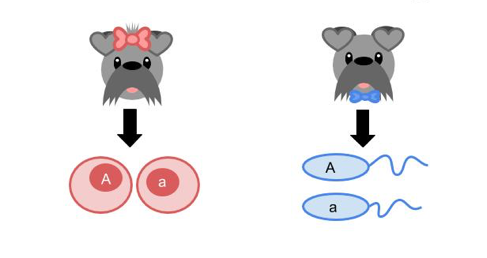
About Gametes
Every gamete, which are the eggs from the female and the sperm from the male, gets one of the two alleles.
(They also get one copy of every other gene in the genome, but we are just focusing on one for simplicity)
Outcome Likelihood — Autosomal Recessive Inheritance
We can calculate the likelihood of a puppy having the disease using this punnett square. As we can see, there is one-quarter (25%) probability that a puppy will have the disease and one-half (50%) of the puppies will be carriers of the allele.

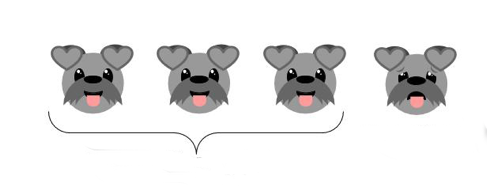
Healthy puppies
Puppy with disease
About Sex-Linked Inheritance
Any genes that are on one of the two sex chromosome in a dog is considered sex-linked. This is why some diseases are at higher risk in one sex and not another (most often in males). In X-linked genes (genes that live on the X chromosome) the rules of dominance and recessivity still apply, but since males only have one X-chromosome, essentially every disease is dominant for them.
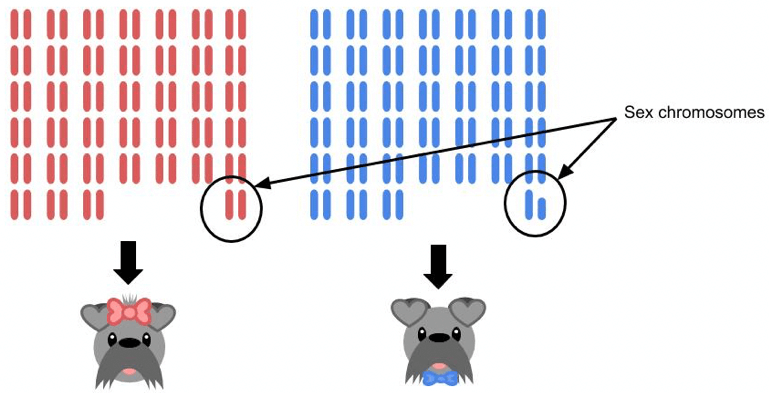
Dog Chromosomes
Dogs each have 38 pairs of autosomal (non-sex) chromosomes, one from each parent.
- Females have two X chromosomes
- Males have one X and one Y chromosome
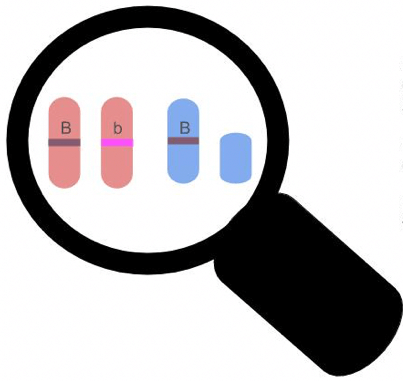
Let’s take this fictional purple B gene on the X chromosome. The recessive b variant causes an X-linked genetic disease.
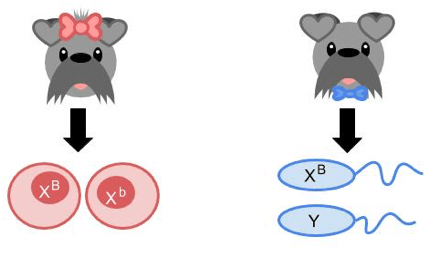
We can still use the potential gametes from both parents to construct a Punnett square to see the potential offspring.
Outcome Likelihood —
X-linked Recessive Inheritance
As can be seen in this Punnett square, all female puppies will be unaffected and half of male puppies will be affected. Furthermore, half of the female puppies with be carriers.
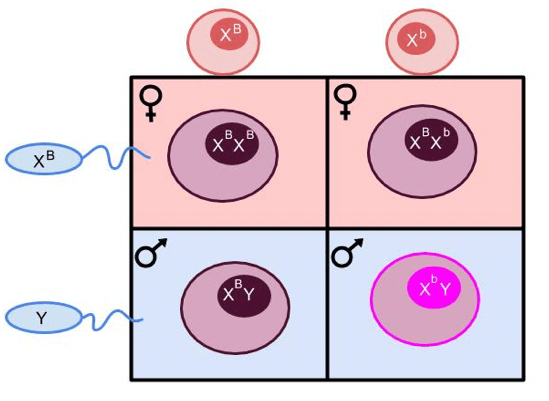
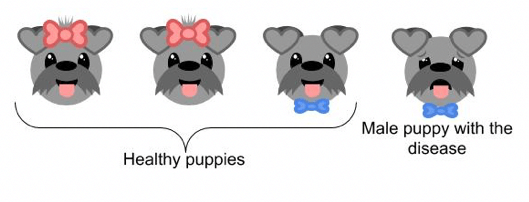
About Mitochondrial Inheritance
Most of the DNA in your dog, or any animal, is contained in the nuclei of their cells. That is, all the genetic material that dictates everything except for many things related to cellular respiration. Cellular respiration is the process by which the body uses oxygen and sugars to produce energy that runs most cellular functions. Cellular respiration is performed by the mitochondria, another organelle in the cell. The mitochondria are unique because they have their own DNA. The mitochondria and their DNA are inherited exclusively through the mother because only the mother contributes organelles to the zygote.
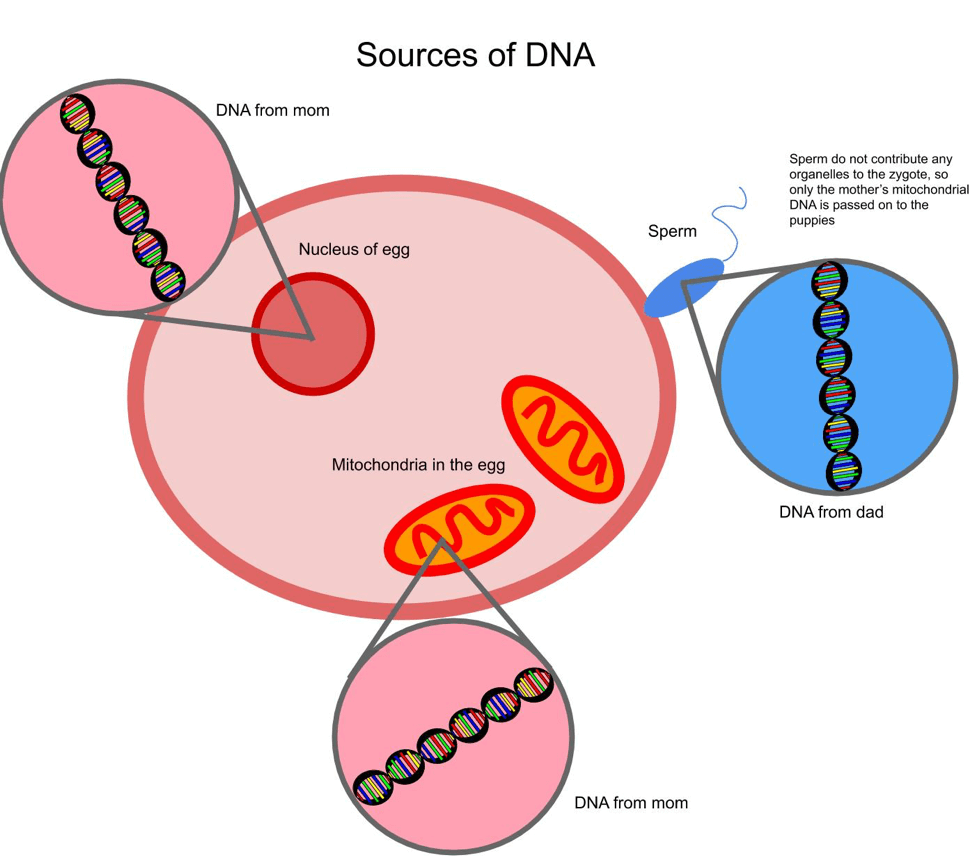
Nuclear vs. Mitochondrial DNA
DNA can come from the mother or father.The DNA from the mother resides in the nucleus of the egg and in the mitochondria. The DNA from the father will be incorporated in the zygote, but only the nuclear DNA will do so. The father’s mitochondrial DNA does not transfer to the zygote, only the mother’s mitochondrial DNA.
Complex Inheritance
The truth is, most traits are not governed by a single gene. Furthermore, most genes are not only dominant or recessive. We describe this large category of inheritance as “complex.” Despite the fact that most genes are complex, clinically it is the most difficult type of genetic condition to address.
Straight Forward, Right?
It’s not. First of all, the genome is incredibly long. If you were to make a necklace out of the human genome, with a single glass bead of one of four colors representing each of the four bases, the string of beads would stretch from Miami to Seattle. Imagine finding perhaps the single bead that should be a different color in that entire chain. Additionally, within even one single breed of dog, there is plenty of natural variation, so there will be plenty of beads that will be different colors in different chains and not have any negative impact on the dogs’ health. That is why looking for the gene that when mutated, causes a disease phenotype can be very difficult.
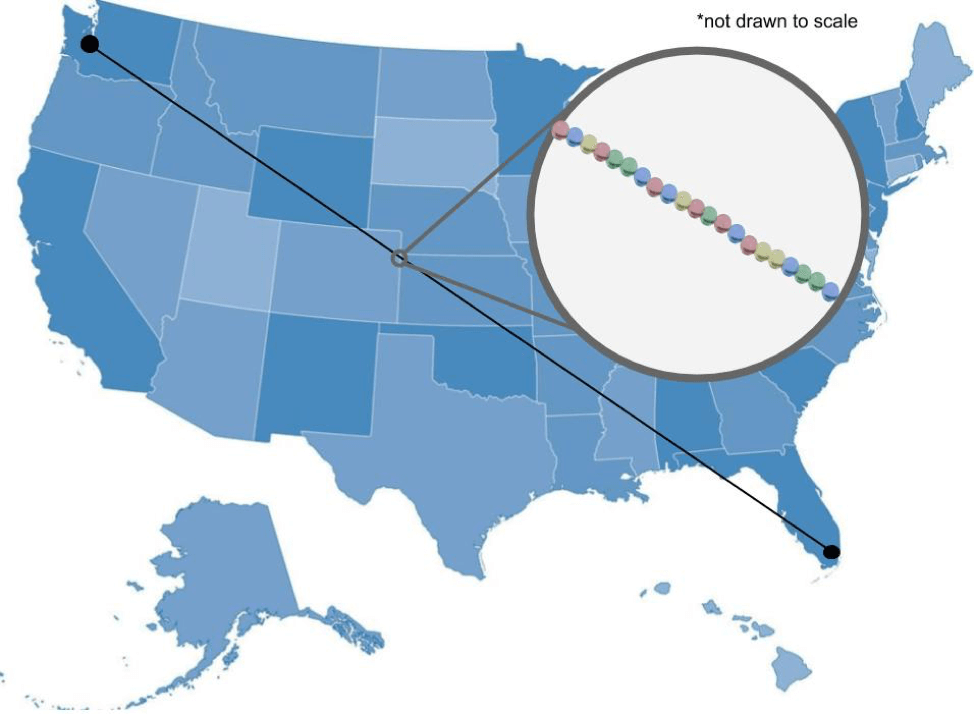
This is where you come in
There is a way that we can narrow down what genes we look at, but it involves lots of dogs and lots of genomes to analyze.
Pedigree analysis
Looking at well-documented pedigrees allows us to more easily identify the mode of inheritance for a given genetic disease. For example, if a disease seems to be inherited from mother to son then that indicates the disease may be X-linked. This allows us to be better able to identify how breeding pairs can be created to minimize genetic disease.
Genome Wide Association Studies (GWAS)/ Linkage Studies
Comparing the entire genome across many dogs allows us to see what nucleotides are different and ideally, identify the genes that cause a genetic disease. If lots of dogs with a disease phenotype have one base at a certain location in the genome, while lots of healthy dogs have another, it would follow that that location in the genome should be studied further. However, in order to be sure that a location that seems significant is and not just a random point of natural variation, we need as many samples as possible.
How Does This Help You & Your Dogs?
The more we learn about the canine genome, the better we can learn to create better genetic tests to identify carriers of known diseases. Using this information would allow us to create better breeding pairs and reduce the risk of puppies in the next generation being affected by those diseases. This would allow us to help promote genetic diversity while trying to eliminate genetic disease.
Ultimately, this research even has potential to allow us to develop gene therapy treatments that would enable, not only the prevention of a genetic disease in future generations, but the active treatment of genetic disease in the current generation of dogs.
